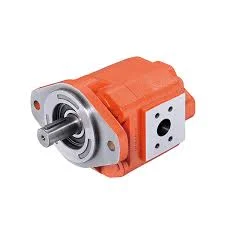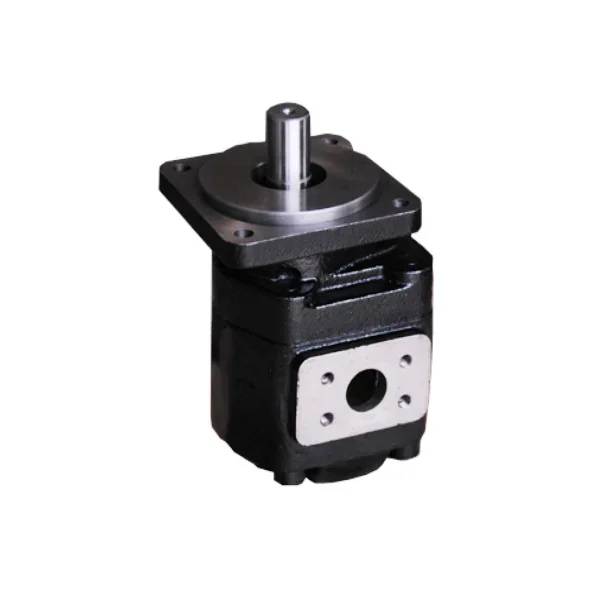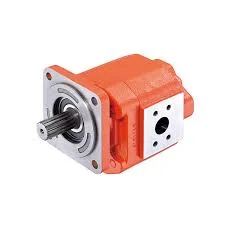Are you ready to supercharge your machinery's performance and efficiency? Look no further than the hydraulic motor. With its robust design and seamless power delivery, this powerhouse component will revolutionize how you operate your equipment. Say goodbye to sluggish performance and hello to optimal productivity. Harness the force of hydraulics with a motor that packs a punch, giving you the edge you need to tackle any task with ease.
Journey Through Time
William Armstrong
William Armstrong made significant contributions to the development of hydraulic motors in the mid-19th century. His innovations laid the foundation for the modern hydraulic motors we use today.
Evolution
From simple fixed-stroke designs, hydraulic motors have evolved into more complex variable stroke designs. These advancements have greatly improved efficiency and performance.
Industrial and Civil Engineering
Hydraulic motors play a crucial role in various industrial and civil engineering tasks. Their versatility makes them ideal for powering heavy machinery and equipment efficiently.

Types of Motors
Vane Motors
Vane motors operate on the principle of using eccentric bores that house sliding vanes. These vanes extend or retract due to centrifugal force, enabling fluid flow and rotational motion.
Gear Motors
Gear motors consist of driven and idler gears within their construction. The driven gear transmits energy to the output shaft, while the idler gear maintains continuous contact for smooth operation.
Gerotor Motors
Gerotor motors boast a unique design featuring an inner rotor with fewer teeth than the outer rotor. This configuration creates chambers for fluid displacement, allowing for efficient torque generation and precise speed control.
Inside the Motor
Hydraulic Fluid
When you delve into the inner workings of a hydraulic motor, you will find that hydraulic fluid plays a pivotal role. It transmits power from the pump to the motor, creating a closed circuit for energy transfer. The fluid's incompressible nature ensures efficient torque conversion.
Internal Components
The motor housing encloses essential components like cylinders, pistons, and gears. These parts work together to convert hydraulic pressure into rotational motion, generating high torque outputs. The pistons move back and forth within the cylinders, driving the output shaft and producing mechanical work.
Angular Displacement
As you explore further, you will uncover how hydraulic motors utilize valves to control oil flow. This regulates the amount of hydraulic fluid entering the motor, adjusting the speed and torque output accordingly. By precisely managing fluid flow, hydraulic motors can achieve precise angular displacement for various applications.

Stopping the Motion
Controlling Rotation
When you need to stop the rotation of a hydraulic motor, adjusting the flow and direction of the fluid is crucial. By regulating the flow rate, you can effectively control the speed and ultimately bring the motion to a halt.
Importance of Safety Features
Implementing proper safety features in hydraulic systems is paramount for preventing accidents. Ensuring that emergency stop mechanisms are in place can swiftly halt the mechanical energy transfer and prevent any potential hazards.
Maintenance and Troubleshooting
Regular maintenance of your hydraulic motor is essential to avoid motion-related issues. Monitoring factors such as pressure, displacement, and charge pressure helps in identifying any abnormalities early on, allowing for timely troubleshooting.
Practical Uses
Diverse Applications
Hydraulic motors have wide-ranging applications across various industries. You can find them in construction equipment, agricultural machinery, and even aerospace technology.
Hydraulic motors are crucial for tasks such as driving conveyor belts, rotating shafts, and powering winches. Their versatility makes them indispensable in modern hydraulic systems.
Efficiency and Effectiveness
The efficiency of hydraulic motors lies in their ability to convert fluid power into mechanical energy with minimal energy loss. This results in high performance and productivity.
In comparison to electric motors, hydraulic motors offer higher torque at lower speeds, making them ideal for heavy-duty applications. Their robust design ensures reliable operation even under extreme working conditions.

Summary
You've delved into the evolution of hydraulic motors, explored their various types and inner workings, and learned about their practical applications across industries. Understanding how these motors operate and their versatility in powering machinery is crucial for appreciating their significance in modern technology. As you grasp the intricacies of hydraulic motors, you gain insight into the driving force behind many essential functions in today's world.
Now that you have a comprehensive overview of hydraulic motors, consider how this knowledge can enhance your understanding of machinery and automation. Whether you're a student, an industry professional, or simply curious about technology, the insights gained from this exploration can empower you to make informed decisions and leverage hydraulic systems effectively in your endeavors.
Frequently Asked Questions
What are the different types of hydraulic motors?
Hydraulic motors can be categorized into gear, vane, and piston types. Gear motors are compact and cost-effective, vane motors offer high speeds, while piston motors provide high power outputs suitable for heavy-duty applications.
How does a hydraulic motor work?
A hydraulic motor converts hydraulic energy into mechanical energy by pushing fluid against a set of rotors or gears inside the motor. This rotation generates torque to drive machinery or equipment connected to the motor.
What are the advantages of using a hydraulic motor?
Hydraulic motors offer high power density, precise speed control, and excellent reliability in various applications. They are also known for their efficiency in converting fluid power into mechanical power, making them ideal for demanding industrial tasks.
Can hydraulic motors be used in mobile applications?
Yes, hydraulic motors find extensive use in mobile applications such as construction equipment, agricultural machinery, and marine systems. Their compact size, durability, and ability to deliver high torque at low speeds make them well-suited for mobile machinery operations.
How can I maintain a hydraulic motor for optimal performance?
Regularly check and replace the hydraulic fluid, inspect seals for leaks, monitor temperature levels during operation, and ensure proper alignment of the motor with the driven equipment. Following manufacturer guidelines for maintenance schedules is crucial to keep your hydraulic motor running smoothly.

